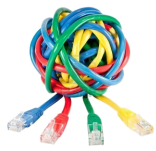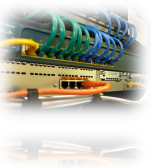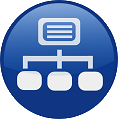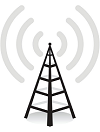Types of WAN Links
I've found this table that I created a while ago and it lists common WAN connections that businesses use. I have used this table like a reference guide to familiar myself into other protocols.
I've found this table that I created a while ago and it lists common WAN connections that businesses use. I have used this table like a reference guide to familiar myself into other protocols.
Changing topics for today, I want to talk about the Windows 8 Developer Preview which was released on September 13th. I had the time to install it under virtual box and was pleasantly surprised! About how fast it installed the easy to understand install prompts and the new "Metro" UI which is aimed at touched devices. Also the ability to switch to the standard Windows operating system.
 Switching in the network can happen in two ways, these layer-two devices send frames but they can forward them in different ways. These different modes have positive and negative effects which depend on the type of network environment that runs through them!
Switching in the network can happen in two ways, these layer-two devices send frames but they can forward them in different ways. These different modes have positive and negative effects which depend on the type of network environment that runs through them!
Switching gears for today, Cisco has introduced a certification for onsite support technicians, who need product-specific technical skills to diagnose, restore, repair, and replace critical Cisco equipment. This certification which was introduced this summer now has questions about it from CLN (Cisco Learning Network) and other Cisco sites.
Although layer two redundancy should never end, this is the final chapter of understanding layer two redundancy in the network. Last week I talked about how and why STP (IEEE 802.1D) is important in the network and the problems and causes of not having it which can turn your network against you and everybody on it. Today’s post will talk about how a switch decides which one is in charge on the network and which ones aren’t.
In the month of August I talked about the "beginnings" of layer two redundancy mainly looking at the basic foundations and fundamentals of having layer two redundancy. Let's continue are discussion about redundancy in the layer two environment.
 Weeks ago and maybe months :), I talked about distance vector protocols and with that you probably got the feeling that when using a distance vector protocol it does not give a full network graphical representation of the entire network. Only the directly connected routes can't remember? Check out this post Distance Vector Routing.
Weeks ago and maybe months :), I talked about distance vector protocols and with that you probably got the feeling that when using a distance vector protocol it does not give a full network graphical representation of the entire network. Only the directly connected routes can't remember? Check out this post Distance Vector Routing.
In today's post I wanted to talk about the widely used Ping command. Which is one of the best methods (I think) to begin network troubleshooting. When part of the network goes down it is sometimes hard to figure out why? When you issue the ping command or the extended ping command in a Cisco router several ICMP codes can come up on the router. Let's discuss them!
 In a perfect world we would never need redundancy on a network infrastructure, but as you know as well as I know we don't live in a perfect world. Hardware will eventually fail, bottlenecks will appear, and the speed of our network will become slower when we max the bandwidth on links. So having redundancy in routers, connections, and having a hierarchy network is one of best choices to make when improving the efficiently of the network.
In a perfect world we would never need redundancy on a network infrastructure, but as you know as well as I know we don't live in a perfect world. Hardware will eventually fail, bottlenecks will appear, and the speed of our network will become slower when we max the bandwidth on links. So having redundancy in routers, connections, and having a hierarchy network is one of best choices to make when improving the efficiently of the network.
 Wow July is almost over and I only posted one topic! Before August comes up I wanted to post at least one more topic which deals with the wireless side of the networking world. Ever heard of Super WiFi?
Wow July is almost over and I only posted one topic! Before August comes up I wanted to post at least one more topic which deals with the wireless side of the networking world. Ever heard of Super WiFi?